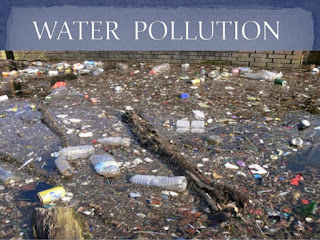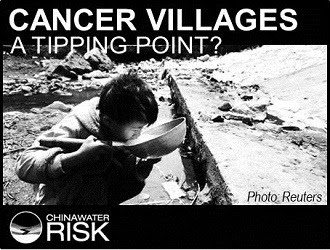Environmental Pollution Also To Blame For Antibiotic Resistance
Environmental Pollution Also To Blame For Antibiotic Resistance: Other Factors That Make Bacteria Drug Resistant : Healthy Living/Wellness : Tech Times: "Bacteria can mutate and become resistant to medications over time. This resistance causes existing treatments to lose their efficacy, and in some cases, it consequently results in death that could have been prevented.
Previous research has shown that the misuse of drugs leads to the development of antibiotic-resistant bacteria. It mostly affects treatments for common infectious diseases such as colds, flu and sore throat. It has prompted experts to educate the public about not using antibiotics when treating such illnesses.
Antibiotic resistance may also turn into large-scale antimicrobial resistance, spoiling treatments for diseases such as HIV or malaria, as the World Health Organization explains.
With that, a scientist at the University of Georgia believes that the rapid growth of these unruly microbes is not only the result of antibiotic misuse, but may also be caused by something else.
Environmental Pollution Influences Antibiotic Resistance
Ecologist J. Vaun McArthur said that aside from misuse of medications, environmental contaminants greatly influence the rapid rise of antibiotic-resistant bacteria.
McArthur and his research team went to nine streams in the Savannah River Site, where materials for nuclear weapons were produced in the 1950s. The production had resulted in contamination of several areas in the site.
Before antibiotics were used in agriculture and medicine, the Savannah River Site was constructed and closed to the public.
"The streams have not had inputs from wastewater, so we know the observed patterns are from something other than antibiotics," said McArthur.
The researchers collected sediment and water samples from 11 areas in the Savannah River Site where levels of waste and metal pollution ranged from low to high. They then tested five antibiotics on about 427 strains of the E. coli bacteria.
Researchers found that eight of the 11 water samples contained significantly elevated levels of antibiotic resistance. These were found at the northern part of the Upper Three Runs Creek, as well as on U4 and U8, two streams in the developed area.
The stream system enters the Savannah River Site via the Upper Three Runs Creek. Water from the creek flows through agricultural, residential, and industrial areas before it passes the SRS. McArthur said bacteria in this stream have been affected by antibiotics.
Meanwhile, the water in U4 and U8 are entirely contained within the site and has no known input of antibiotics.
During second testing, McArthur tested 23 antibiotics on U4, U8 and U10. This last stream has little to no industrial impact.
He and his team found that 95 percent of the bacteria from these streams are resistant to no less than 10 of the 23 antibiotics, including drugs such as ciprofloxacin and gatifloxacin, which are used to treat pink eye, sinus, and urinary tract infections.
In the end, McArthur and his team concluded that without any source of antibiotic input, high levels of antibiotic resistance can only be caused by environmental contaminants in the streams. These contaminants include metals such as mercury and cadmium.
McArthur said these antibiotic-resistant streams flow through the Savannah River, which is located near residential areas. This is how humans come into contact with industrially-contaminated water that are prone to antibiotic resistance.
The findings are featured in the journal Microbial Ecology.
Other Factors That Influence Antibiotic Resistance: In Poultry and Agriculture
Tech Times reported in early November, the unnecessary use of antibiotics on poultry also leads to the development of antibiotic-resistant drugs.
Antibiotics are pumped to chickens to either treat diseases or incorporate growth. Because of that, antibiotic resistance can be transferred to humans by means of food consumption, direct contact or the environment, experts said.
Scientists have also found that antibiotic resistance can travel from country to country.
As Chinese researchers revealed, a superbug called mcr-1 is resistant to the highest type of antibiotics. Unfortunately, this strongly-resistant superbug has been found in several places all over the world.
New studies discovered that the mcr-1 has been found in Laos, the Netherlands, Algeria, France and Thailand. Unfortunately, reports being published in the journal Lancet Infectious Diseases show that the superbug may be spreading across such a large expanse."
'via Blog this'
Previous research has shown that the misuse of drugs leads to the development of antibiotic-resistant bacteria. It mostly affects treatments for common infectious diseases such as colds, flu and sore throat. It has prompted experts to educate the public about not using antibiotics when treating such illnesses.
Antibiotic resistance may also turn into large-scale antimicrobial resistance, spoiling treatments for diseases such as HIV or malaria, as the World Health Organization explains.
With that, a scientist at the University of Georgia believes that the rapid growth of these unruly microbes is not only the result of antibiotic misuse, but may also be caused by something else.
Environmental Pollution Influences Antibiotic Resistance
Ecologist J. Vaun McArthur said that aside from misuse of medications, environmental contaminants greatly influence the rapid rise of antibiotic-resistant bacteria.
McArthur and his research team went to nine streams in the Savannah River Site, where materials for nuclear weapons were produced in the 1950s. The production had resulted in contamination of several areas in the site.
Before antibiotics were used in agriculture and medicine, the Savannah River Site was constructed and closed to the public.
"The streams have not had inputs from wastewater, so we know the observed patterns are from something other than antibiotics," said McArthur.
The researchers collected sediment and water samples from 11 areas in the Savannah River Site where levels of waste and metal pollution ranged from low to high. They then tested five antibiotics on about 427 strains of the E. coli bacteria.
Researchers found that eight of the 11 water samples contained significantly elevated levels of antibiotic resistance. These were found at the northern part of the Upper Three Runs Creek, as well as on U4 and U8, two streams in the developed area.
The stream system enters the Savannah River Site via the Upper Three Runs Creek. Water from the creek flows through agricultural, residential, and industrial areas before it passes the SRS. McArthur said bacteria in this stream have been affected by antibiotics.
Meanwhile, the water in U4 and U8 are entirely contained within the site and has no known input of antibiotics.
During second testing, McArthur tested 23 antibiotics on U4, U8 and U10. This last stream has little to no industrial impact.
He and his team found that 95 percent of the bacteria from these streams are resistant to no less than 10 of the 23 antibiotics, including drugs such as ciprofloxacin and gatifloxacin, which are used to treat pink eye, sinus, and urinary tract infections.
In the end, McArthur and his team concluded that without any source of antibiotic input, high levels of antibiotic resistance can only be caused by environmental contaminants in the streams. These contaminants include metals such as mercury and cadmium.
McArthur said these antibiotic-resistant streams flow through the Savannah River, which is located near residential areas. This is how humans come into contact with industrially-contaminated water that are prone to antibiotic resistance.
The findings are featured in the journal Microbial Ecology.
Other Factors That Influence Antibiotic Resistance: In Poultry and Agriculture
Tech Times reported in early November, the unnecessary use of antibiotics on poultry also leads to the development of antibiotic-resistant drugs.
Antibiotics are pumped to chickens to either treat diseases or incorporate growth. Because of that, antibiotic resistance can be transferred to humans by means of food consumption, direct contact or the environment, experts said.
Scientists have also found that antibiotic resistance can travel from country to country.
As Chinese researchers revealed, a superbug called mcr-1 is resistant to the highest type of antibiotics. Unfortunately, this strongly-resistant superbug has been found in several places all over the world.
New studies discovered that the mcr-1 has been found in Laos, the Netherlands, Algeria, France and Thailand. Unfortunately, reports being published in the journal Lancet Infectious Diseases show that the superbug may be spreading across such a large expanse."
'via Blog this'



Comments
Post a Comment